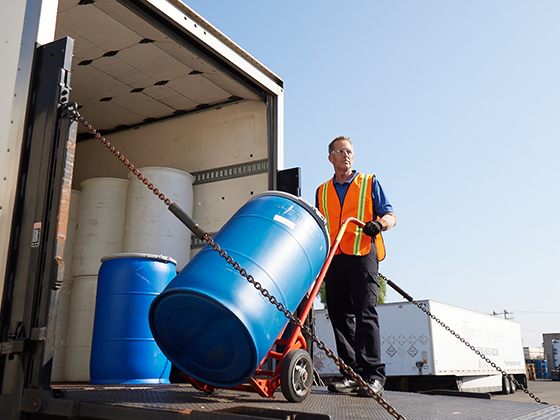
Hazardous waste transportation is a critical process in ensuring the safe and proper disposal of hazardous materials. There are several important factors to consider when transporting hazardous waste, including the type of waste, the container, the route, and the destination.
- Choose the right container:
The type of container you use for hazardous waste transportation is important in ensuring the safety of the waste. Containers should be made of a durable material that can withstand the waste material and be properly sealed to prevent leaks.
- Select the appropriate route:
When transporting hazardous waste, it is important to select a route that will minimize the risk of exposure to the waste. Routes should be planned and avoid populated areas.
- Choose a destination that is equipped to handle hazardous waste:
Not all facilities are equipped to handle hazardous waste. It is important to research destination options in advance to ensure that the facility can properly dispose of the waste.
- Follow all safety regulations:
There are several regulations in place to ensure the safety of hazardous waste transportation. It is important to familiarize you with these regulations and to follow them strictly.
- Use proper labeling:
All containers used for transporte de materiales peligrosos must be properly labeled. Labels should include the type of waste, the hazards, and the destination.

- Use proper packaging:
Hazardous waste should be properly packaged to prevent leaks and spills. Packaging should be done in a way that minimizes the risk of exposure to waste.
- Train all personnel:
All personnel involved in the hazardous waste transportation process should be properly trained. Training should cover the proper handling of the waste, the route, and the destination.
- Maintain communication:
Communication is key in ensuring the safe transportation of hazardous waste. Personnel should be in constant communication with each other to ensure that the process is going smoothly. Proper communication will ensure that all safety hazards are addressed and that the waste is disposed of properly.
- Be prepared for emergencies:
Emergencies can happen at any time during the hazardous waste transportation process. It is important to have a plan in place in case of an emergency. The first step is to have all employees properly trained in how to handle an emergency. The plan should also include a list of emergency numbers and where to find them.
If an accident occurs, the first step is to call the local authorities. If there is a fire, the driver should turn off the engine and disconnect the battery. If there is a spill, the driver should put on proper protective clothing and contain the spill.
- Inspect the waste:
Before transporting hazardous waste, it is important to inspect the waste to ensure that it is safe to transport. Waste should be inspected for leaks, spills, and other potential hazards.








